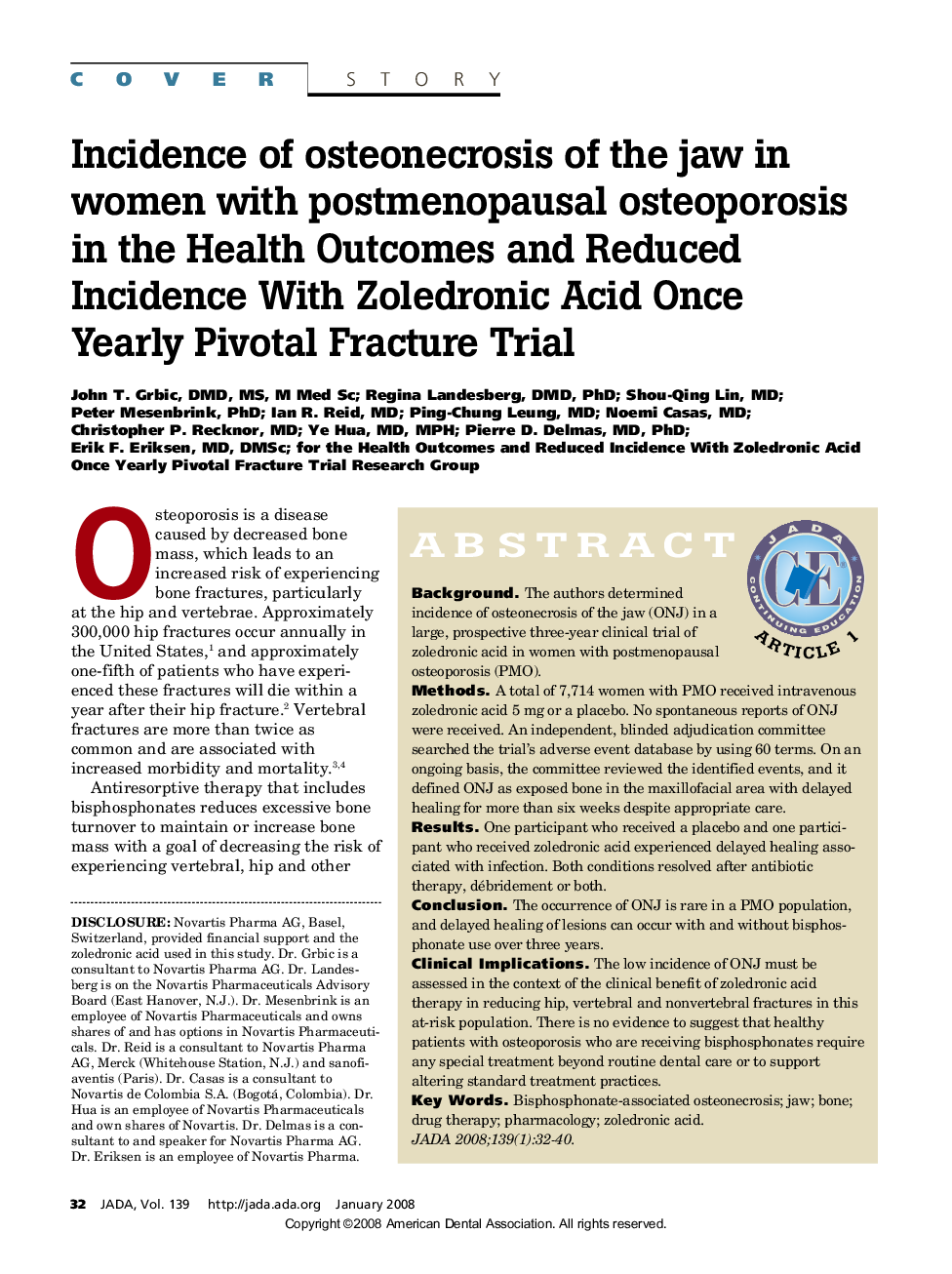| Article ID | Journal | Published Year | Pages | File Type |
|---|---|---|---|---|
| 3140226 | The Journal of the American Dental Association | 2008 | 9 Pages |
ABSTRACT BackgroundThe authors determined incidence of osteonecrosis of the jaw (ONJ) in a large, prospective three-year clinical trial of zoledronic acid in women with postmenopausal osteoporosis (PMO).MethodsA total of 7,714 women with PMO received intravenous zoledronic acid 5 mg or a placebo. No spontaneous reports of ONJ were received. An independent, blinded adjudication committee searched the trial's adverse event database by using 60 terms. On an ongoing basis, the committee reviewed the identified events, and it defined ONJ as exposed bone in the maxillofacial area with delayed healing for more than six weeks despite appropriate care.ResultsOne participant who received a placebo and one participant who received zoledronic acid experienced delayed healing associated with infection. Both conditions resolved after antibiotic therapy, débridement or both.ConclusionsThe occurrence of ONJ is rare in a PMO population, and delayed healing of lesions can occur with and without bisphosphonate use over three years.Clinical ImplicationsThe low incidence of ONJ must be assessed in the context of the clinical benefit of zoledronic acid therapy in reducing hip, vertebral and nonvertebral fractures in this at-risk population. There is no evidence to suggest that healthy patients with osteoporosis who are receiving bisphosphonates require any special treatment beyond routine dental care or to support altering standard treatment practices.
